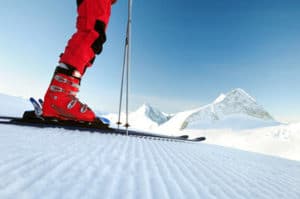 Now that this hottest of Utah summers is over, it’s time to turn our focus from walking a golf course or pedaling a mountain bike to shoving our feet into ski boots and sliding down a mountain.
Now that this hottest of Utah summers is over, it’s time to turn our focus from walking a golf course or pedaling a mountain bike to shoving our feet into ski boots and sliding down a mountain.
You’re looking to get new boots for the upcoming season and you’re wondering what to do if the technician tells you your boots need “cants.”
Let’s get into that in this month’s blog.
What is a cant?
A “cant” is a wedge that is used to adjust the angle by which the ski boot interfaces with the ski. The process of placing cants and adjusting the angle is known as canting.
Why do I need canting?
Humans are anything but identical. Watch five people simply walk on a straight line in front of you and you’ll see all kinds of differences. Some walk with their toes inward. Others walk more like ducks with their feet splayed outward. But looking at the ankles gives the clue to canting. Some people’s ankles tend to bend inward when walking, while others bend outward.
None of this is optimal for snow skiing. Ideally, when a skier stands in a neutral position, with their body weight centered over their feet, their weight should be evenly distributed across the sole of each foot. On snow, this means the person can easily skid the ski laterally as it is flat on the snow. This neutral position then allows the skier to use tiny movements that apply subtle pressure to the edges of the ski, raising or lowering the inner and outer edges and initiating arcing of the ski edge or skidding to drop speed.
But lots of people have a neutral position that is anything but neutral. In their neutral position more of their weight is focused on the inside or outside of the foot. This is simply the way the person’s hips, knees, and ankles are oriented. People can have one foot or both. On snow, these imbalances tip one edge deeper into the snow when the person is supposedly standing in a flat, neutral position. When that person tries to slide the ski, it will dig in slightly and catch.
An easy tell for these scenarios is if you wear your shoes out more quickly on the inside or outside edges.
To remedy these imbalances, cants are needed. When properly canted, the person with the unbalanced weight distribution’s ski boots will sit flat on the snow just as they did for the person with evenly distributed weight.
Ski shop boot fitters can achieve canting with different solutions. The most common option is to adjust the alignment of the boot with the lower leg and/or sandwiching a wedge somewhere within the foot-to-ski connection. The wedge acts to shim up and align the center of the knee over the center of the boot, compensating for larger geometry problems with the person’s anatomy.
Beyond the world of skiing, the same issues with uneven weight distribution can be rectified in shoes with orthotics.
Do you have issues with your feet? Give us a call at any of our five Foot & Ankle Clinics of Utah in American Fork (801), 763-3885; Payson, (801) 765-1718; Springville (801) 491-3668; and Orem (two locations, (801) 226-2421 or (801) 765-1718).

